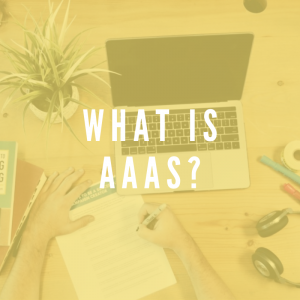
The current landscape of agencies today
Global agencies have always come to dominate their industry after decades of acquiring smaller agencies in a range of specialty disciplines such as creative and branding services, digital, media planning and buying, public relations and market research. We can all agree that the current disruption in the market has definitely impacted the way agencies operate. This phenomenon has stirred curiosity among industry professionals on what the future of agency models hold.
What are the problems faced by agencies today?
The standard model has always been hierarchical, which on a largely fee-based economy dictates that the more levels there are, the more value there is to the agency model as there are new levels to charge. However, that model is broken as it prolongs the work approval process. Additionally, with too many layers, it leaves creatives wondering about what clients really want – on top of a million voices diluting the work while expanding the client’s budget.

Also, with the growing complexity of platforms and marketing channels in the current digital space, professional marketers have to focus on a wider range of marketing scope – from customer interactions to data strategy and delivery of the message to the audience. This has forced them to engage multiple agencies in order to work with multiple disciplines, resulting in redundancies, inefficiencies, and waste of resources such as money, time and manpower. Not forgetting, the constant decline of margins amidst greater and greater competition.
Leveraging on the tools available in the creative industry
Currently, agencies that could provide end-to-end service are more valuable than ever, as evident with the many creative tools and resources which have been created in the marketplace to help fulfill the demand. Particularly, boutique agencies should be on the lookout for a platform that has seamless integration of multiple tools. While the term SaaS is not too foreign in the technology space, the term AaaS which stands for Agency-As-A-Service is gaining momentum.

With AaaS, businesses gain access to the unified platform of creative tools and resources for monthly or yearly subscription fee. For instance, a boutique agency could subscribe to this service which consists of creative tools such as the Logomaker, Mockupmaker, Videomaker, Designmaker, Color Pairer, and Font Pairer – all in one place. This is a powerful solution as it offers many benefits to agencies.
1. Maximum impact on return from low investment
Typically, an advertising agency would take months just to get a branding kit right. However, as the market evolves adjacent to the development of technology, many professional marketers are pressured to push their campaigns or launch their products fast. Speed is the key to the measurement for almost every successful campaign launch today. Hence, subscribing to an AaaS which assures higher quality output at a low investment proves to be a wise move.
The advantage of AaaS lies in its ability to eliminate many tedious tasks for creatives, freeing up time and capacity for them to prioritize on producing better work. AaaS helps to speed up and simplify processes by producing the same outcome or even better quality output. In other words, agencies could reduce the headcount or retain their current headcount and still have the capacity to take on more projects.
2. No need for complex and expensive editing software
It goes without saying that starting an agency is hard work and costly as owners will need to fork out capital upfront to cover the overhead charges in acquiring resources and assets to kickstart the business. Purchasing expensive creative software tools for graphic design, video making and etcetera are usually a must in order to get any work done.

Opting for AaaS is a viable solution because it is cheaper compared to branded software. With equally great tools made available on a single platform, creatives are able to access what they need and get a project done in one place rather than hopping between multiple platforms. It also means that when it comes to licensing, purchasers will only need to make a one-time purchase of an all-inclusive licensing plan, instead of several licenses which pose various restrictions such as a limitation on the number of user accounts or specific commercial use.
3. Ability to act as a full-service agency
AaaS could automate certain tasks, allowing agencies to hire talents who are more skillful to do more deep creative work. For instance, part of the subscription plan includes monthly branding kit template giveaway, which means there is no need to engage or subcontract portion of the project – all an agency needs to do is get their team to edit and go.

Also, since clients prefer to deal with agencies that provide end-to-end service, fewer teams are required to do the work, which allows for more control over the marketing message that leads to consistent results. In other words, agencies are able to focus on the areas where quality is deemed important for monetization.
4. Revenue contribution
When the monthly branding kit template giveaway from the subscription plan is utilized for projects, it saves manpower. This yields higher productivity, which leads to more project acquisitions and contributes to greater revenue. If the branding kits are often used, the team will have more capacity to provide better service. It is an advantage as many large advertising agencies out there are quite restricted when it comes to personalized services since an Account Manager usually manages multiple large enterprises, all of which equally demand the same amount of attention.
Besides that, since AaaS is a subscription model, the cost incurred is fixed, allowing agencies to take on bigger or more projects and enjoy a healthy margin while generating revenue.
What is the blueprint of the future agency model?
Whether there is a concrete answer to this question or not does not really matter. What matters is that agencies are willing to be more adaptive and reactive to the needs of their clients. Agencies that will outlast this dynamic market shift are those who encourage their employees to start acting as a thinker and a doer. All the useful and time-saving tools out there powered by A.I would definitely give agencies an edge as ultimately, they free up time and allow them to focus on day-to-day strategic operations.
It also goes without saying that the ‘one-agency experience’ is the preferred choice among clients as it offers a truly integrated marketing experience, from facilitating horizontal storytelling to executing a holistic marketing campaign. However, agencies will also need to play their part in understanding how and why clients are transforming their own businesses. Agencies should, after all, educate and equip their talents with the relevant tools to sprint towards change.
